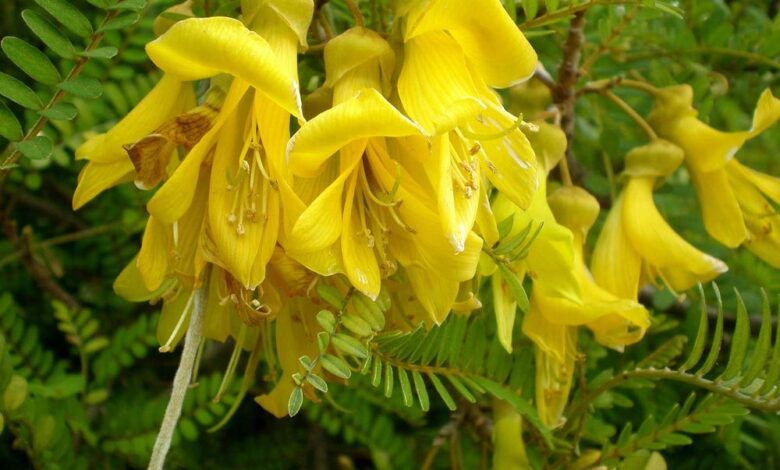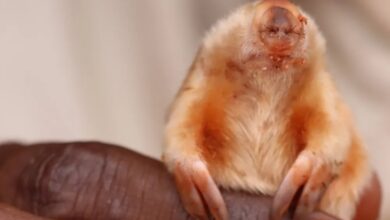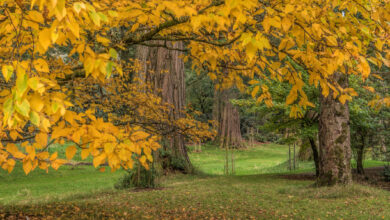
Blossoms of sophora toromiro in Botanical Garden in Barcelona, Spain. Photo Credit: Consultaplantas via Wikimedia under CC By-SA 4.0
Environment ChilePlucked and Replanted: How This Tree Survives Outside Its Native Ground
The toromiro tree hasn’t been found on the Chilean territory of Easter Island for more than half a century. Still, it has found roots in botanical gardens worldwide, and researchers are working hard to return the endemic species to its native ground.
Once found only on Rapa Nui — also known as Easter Island or Isla de Pascua in Spanish — Sophora toromiro survived elsewhere through intermittent collecting and replanting in a dozen different public and private botanical gardens, including in London, Chile, and southern France.
Toromiro’s presence on Rapa Nui dates back at least 35,000 years. Around 16 million palms covered up about 70% of the 163-km2 island at a specific time. In 1911, Chilean botanist Francisco Fuentes noted that the toromiro tree could only be found in Rano Kau in an egg-shaped crater about 1.5 km across, with its microclimate protected by a rock formation. 1917 Swedish botanist Carl Skottsberg found only a single specimen of toromi o. When Norwegian explorer Thor Heyerdahl collected seeds from the last surviving example in late 1955 or early 1956, it was likely the same tree Skottsberg found in Rano Kau 40 years earlier. According to some accounts, toromiro went extinct in the wild in 1960; others speculate it was gone by 1962. Surviving on its native ground has many challenges, including a lack of genetic diversity and degraded soil. Still, botanists haven’t thrown in the towel to reestablish the toromiro tree on Rapa Nui.



